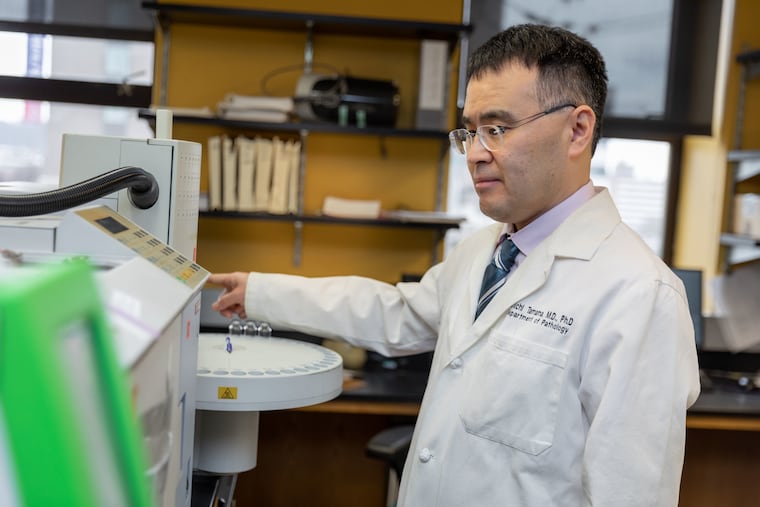Doctors rejected a woman for a liver transplant because of drinking. Then they learned her bladder was brewing alcohol.
Doctors at UPMC think they've identified a new phenomenon: urinary auto-brewery syndrome or bladder fermentation syndrome.

The patient, a 61-year-old woman, insisted she had not been drinking, even though multiple tests found alcohol in her urine.
The stakes were high. She had come to the University of Pittsburgh Medical Center seeking a liver transplant. Another hospital’s transplant program had rejected her because of positive urine tests, and now UPMC’s transplant team was also refusing to add her to their waiting list. Instead, they referred her for treatment for alcohol addiction.
Soon after that, in early 2019, Andrea DiMartini, a psychiatrist with the transplant center, came with one of her students to the office of Kenichi Tamama, a clinical pathologist and medical director of the UPMC Clinical Toxicology Laboratory. They said the woman denied drinking and did not seem impaired. Could he take another look at the lab results?
He says what he saw led him to identify a new medical condition that he and his team want to call “auto-brewery syndrome” or “bladder fermentation syndrome.” Essentially, the woman’s body was making alcohol by itself. The findings, Tamama said, have implications for programs that test urine for alcohol, including addiction treatment and transplant programs.
A description of the case was published Monday in the Annals of Internal Medicine.
Tamama noticed that the woman’s blood tests were negative for alcohol. By itself, this was not proof she hadn’t been drinking. As the body metabolizes alcohol, it clears it from the blood faster than from urine. Then he looked at the results of tests for two byproducts or metabolites of alcohol: ethyl glucoronide and ethyl sulfate. If she had been drinking, they should have been in her urine. They weren’t. He also noticed that the patient had yeast in her urine. And she had uncontrolled diabetes, a sign that sugar levels in her urine would be high.
“I just tried to put these pieces of the puzzle together,” he said.
Tamama had heard of rare cases of “gut fermentation syndrome,” in which alcohol was produced in the gastrointestinal tract. In those cases, patients were intoxicated, and their blood had alcohol in it. There also had been reports of doctors who had fermented urine in a lab. Tamama and his team wondered if something similar could be happening in this patient’s bladder. How could they prove it?
He wanted to make sure the patient was treated fairly. He worried that she might have been “falsely blamed as an alcohol abuser. If that’s the case, it is extremely unfair for that patient.”
They got a fresh urine sample from the patient and had it rushed on ice to the lab. It arrived smelling of alcohol. Then Tamama let it sit in the lab for 24 hours at various temperatures. At 98.6 degrees, the alcohol level increased by a “massive” 18 times, Tamama said. That was proof that yeast in the woman’s urine was converting sugar to alcohol. He added that the "alcohol smell is intensified — like wine.” The researchers were “stunned.”
The yeast was Candida glabrata, which is commonly found in people. It is closely related to brewer’s yeast, Saccharomyces cerevisiae, the study said.
“The experience we describe here of two liver transplant teams at different institutions demonstrates how easy it is to overlook signals that urinary auto-brewery syndrome may be present,” the study said. The team called for standardized guidelines for alcohol abstinence monitoring. Tamama said he expects that auto-brewery syndrome will be rare.
The case report said the patient was reconsidered for a transplant. “This is a game-changer for the patient,” Tamama said. A UPMC spokeswoman said she did not have permission to discuss what has happened to the patient since then.